English information
The Association of Art Schools in Lower Saxony (Landesverband der Kunstschulen Niedersachsen e.V.) has been founded in 1984 as a registered association.
The Association has about 38 Art Schools as members.
Since 2006 it is supported by a government aid with about 90.000 €.
The small office with one and a half staff members for management and administration is located in Hanover.
From 1995 to 2005 the Association supported Art Schools by projects in order of the state with about 150.000 € to 200.000 €; now the Art Schools are supported by regional governmental structures.
The main function and challanges of the Association is to provide assistance for self-help through i.e.:
- Representation of professional interests in culture, education, society, media and research and of political interests
- Public Relations for Art Schools in Lower Saxony
- Communication and networking under the members and with partners for cooperations
- Services, like consulting and qualifying the Art Schools as institution and in practice
- Assistance to define and realise quality standards in artistic and pedagogical working
- Development of pilot projects linking science and practice
- Development of the art-school-concept calling „educating through art“.
Art Schools are small non governmental institutions in Germany which provide practical art courses and projects for different age groups of non-artists, mostly for children.
The majority of Art Schools are initiated by the personal engagement of individuals.
Art schools in Lower Saxony vary strongly in size and working conditions – from volunteer-based charities in one single room to schools run by several fixed staff members in representative buildings in the city centre.
In any case, since the time of their foundation in the 1970ties and 80ties until today they have been forming an indispensable yet notoriously badly funded part of the cultural landscape.
Explicitly delimited from art pedagogy in school with its predefined learning outcomes and marks, they own public reputation and self-esteem as spaces of open, process-based experimentation and of a cutting-edge practice of what in Germany is called „aesthetic education“ („Ästhetische Bildung“).
The staff comprises firstly of artists who either cannot live from selling their work and therefore seek for other sources of income or/and have a personal passion for educational activities. The second part is art teachers who consider themselves as well as artists in their own right and who feel unsatisfied with their creative possibilities in the formal education sector. The third part is people with a degree i.e. in cultural pedagogy or art therapy. The fourth part is a minority with diverse non-art professional backgrounds. This mixture leads to a hybrid professional culture of art and education which has been an elementary characteristic of Art Schools practice from the start.

